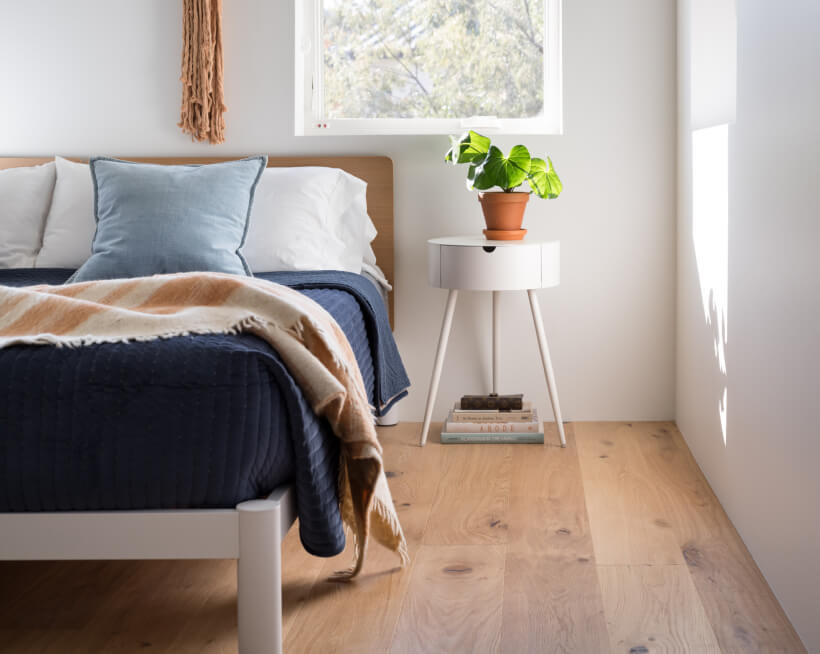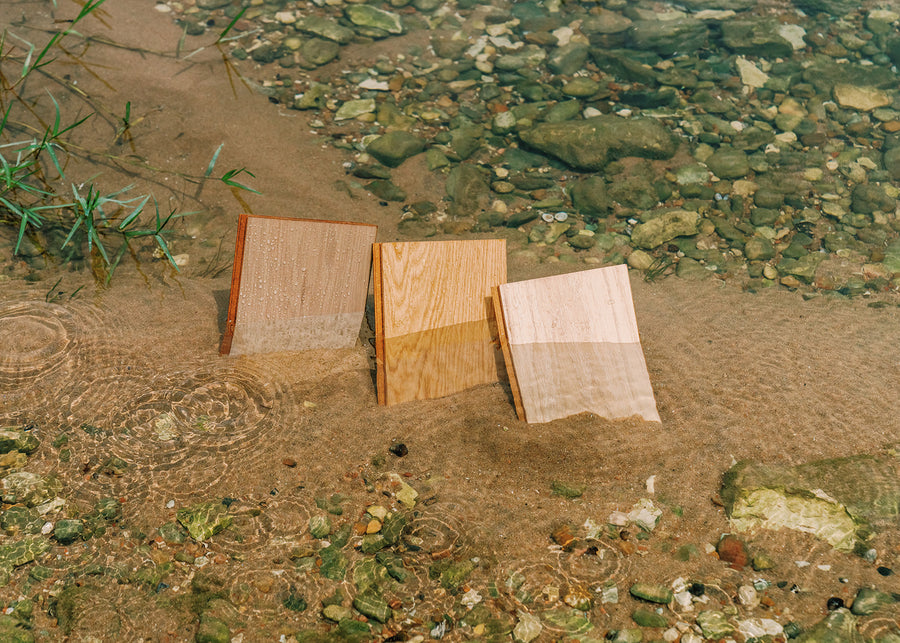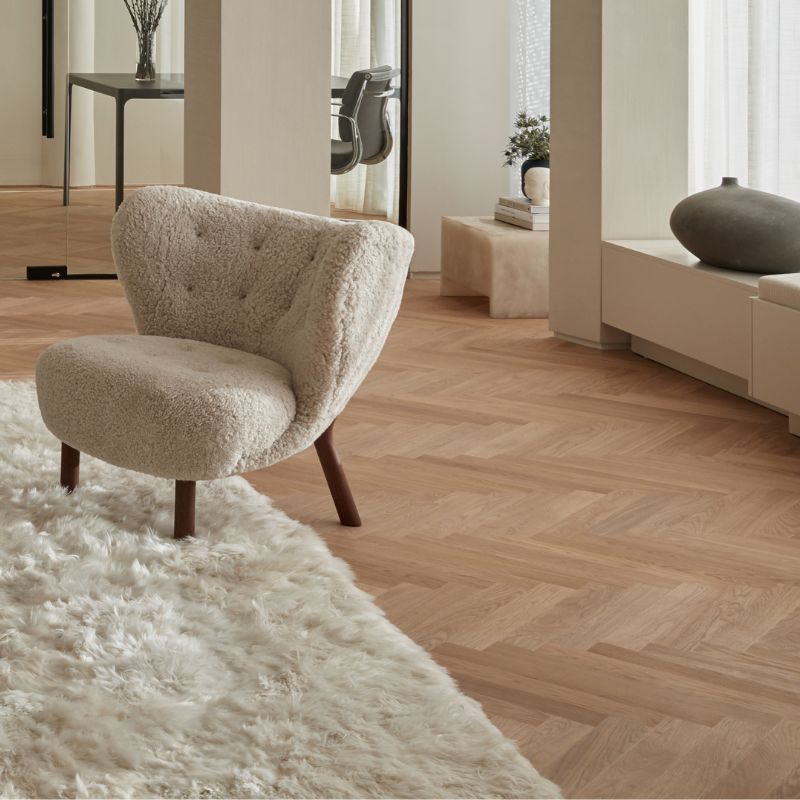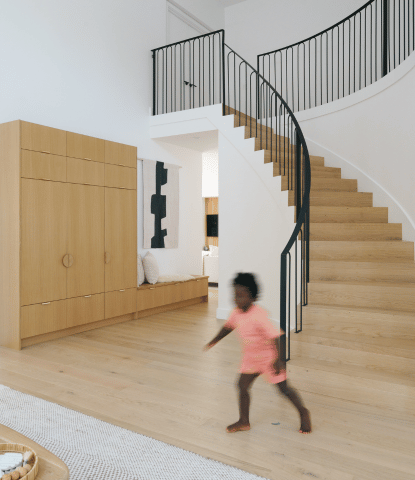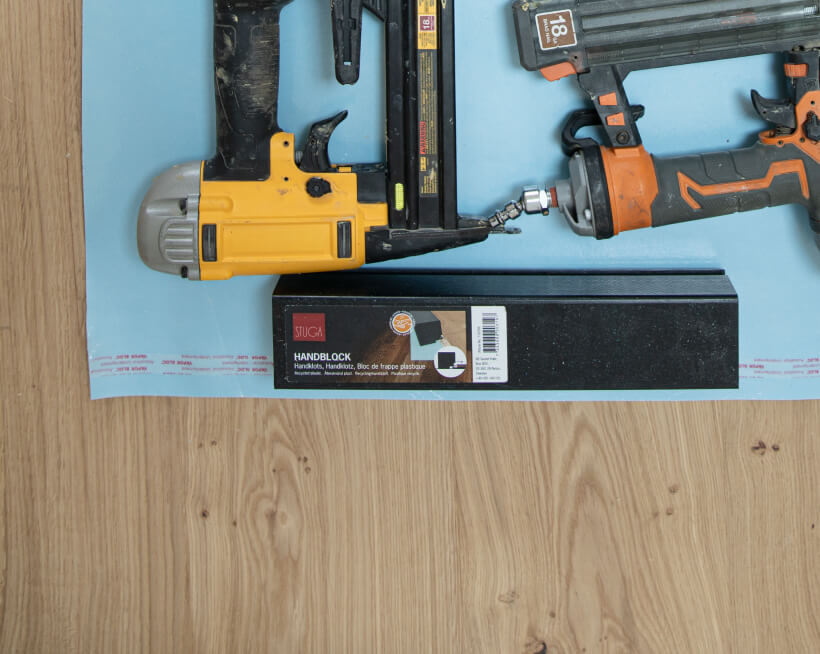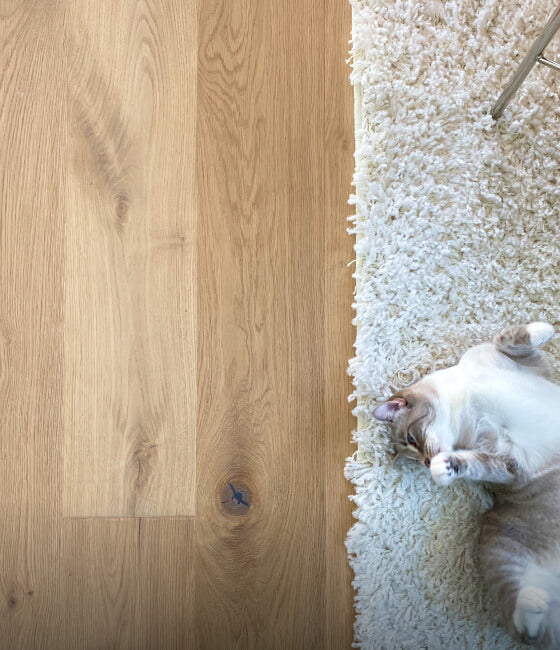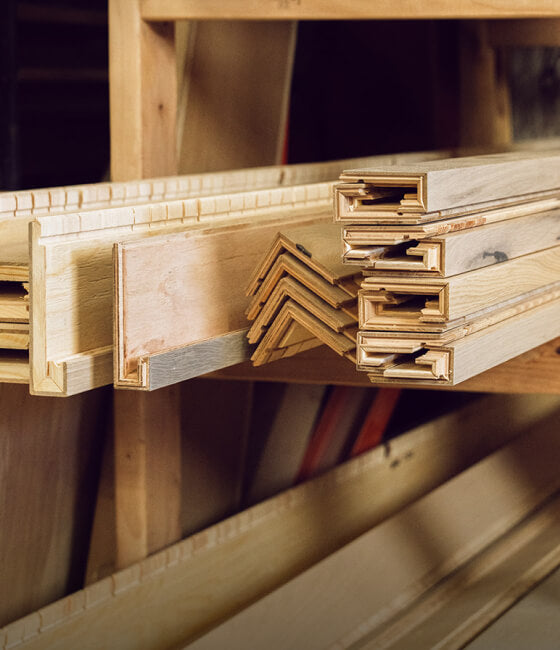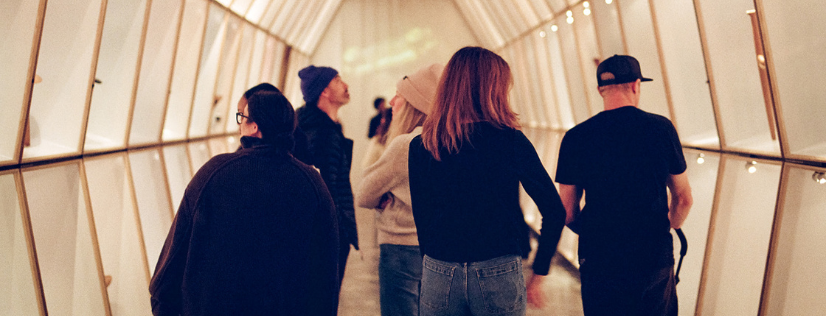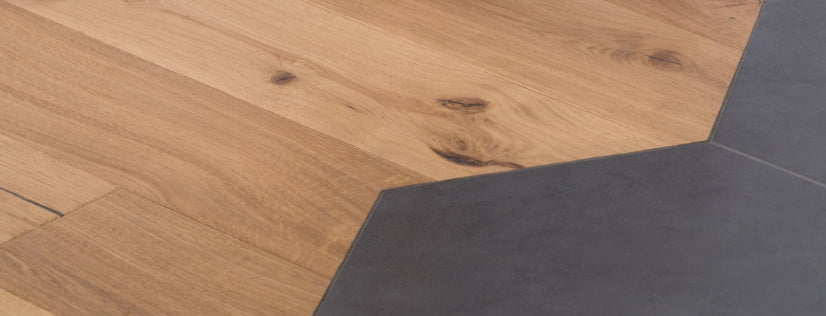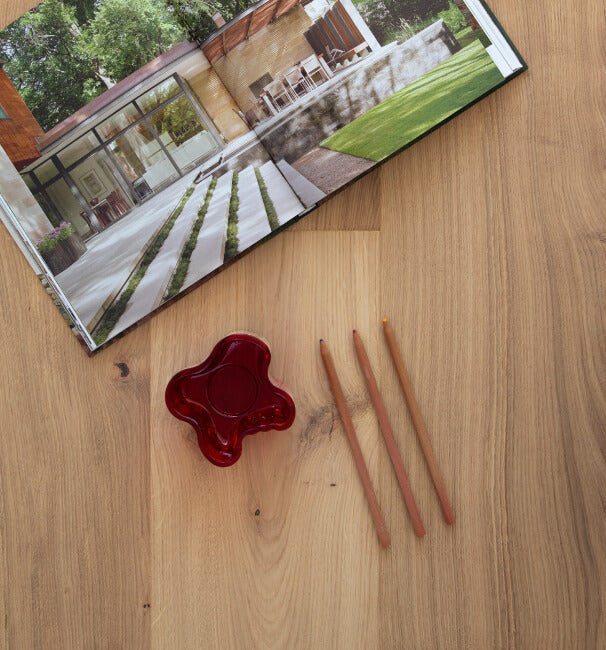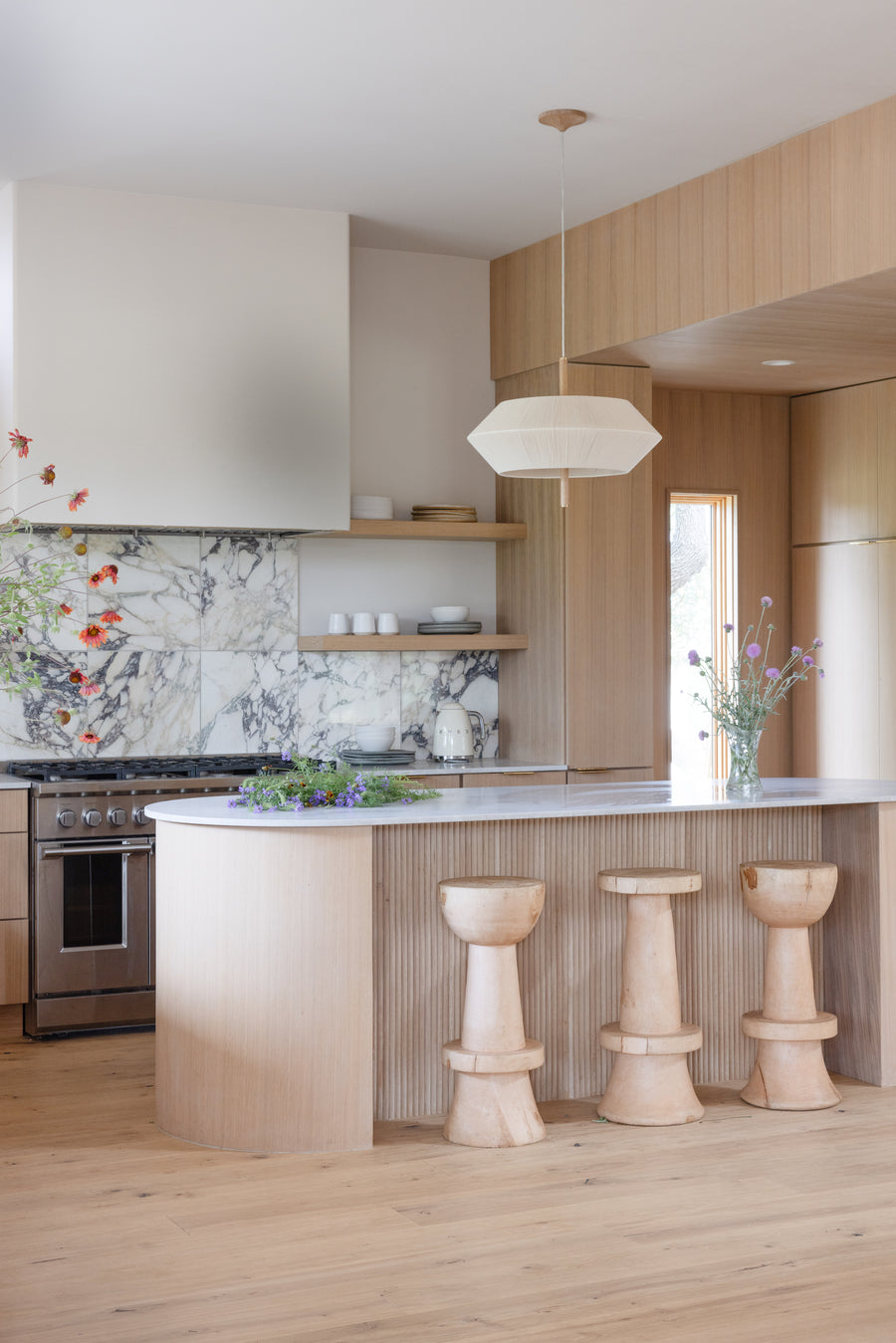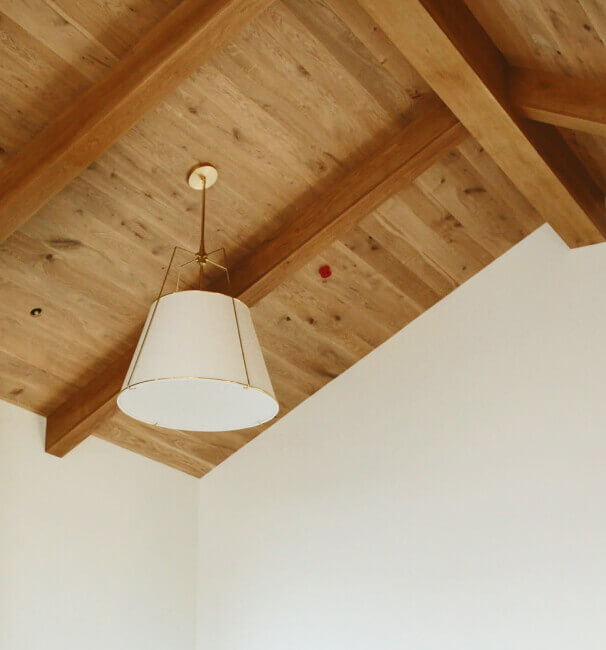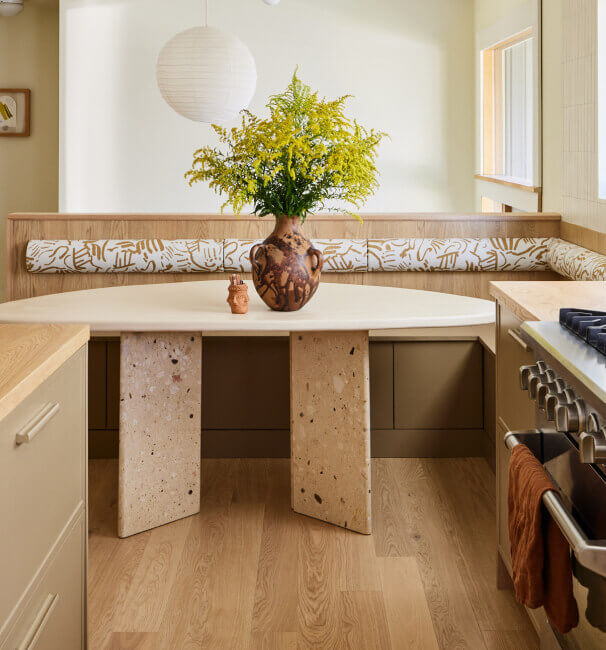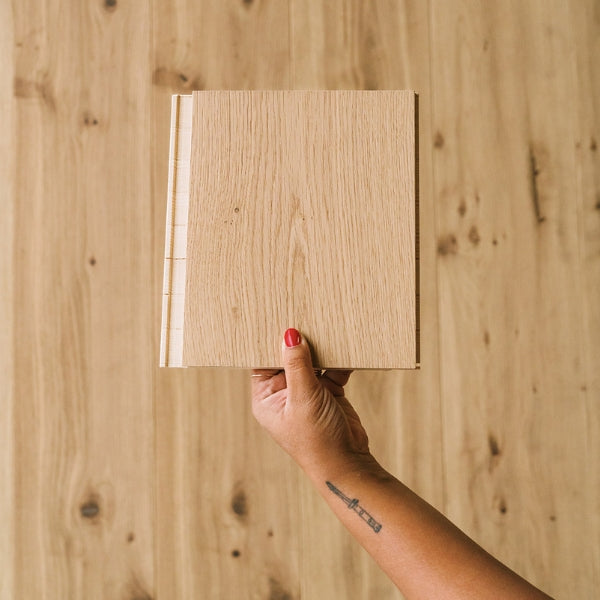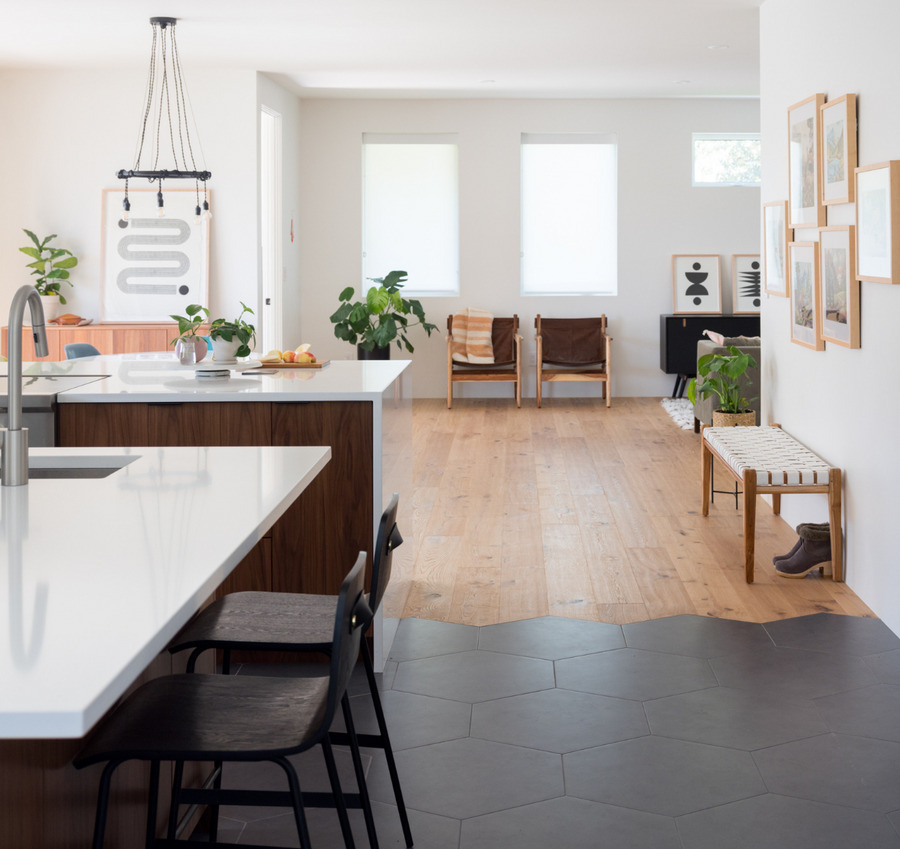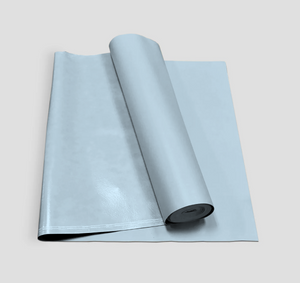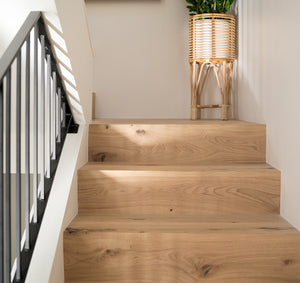June 17, 2022
Eye Scandi Favorites: Why We Love Herringbone
by Mallory Recor
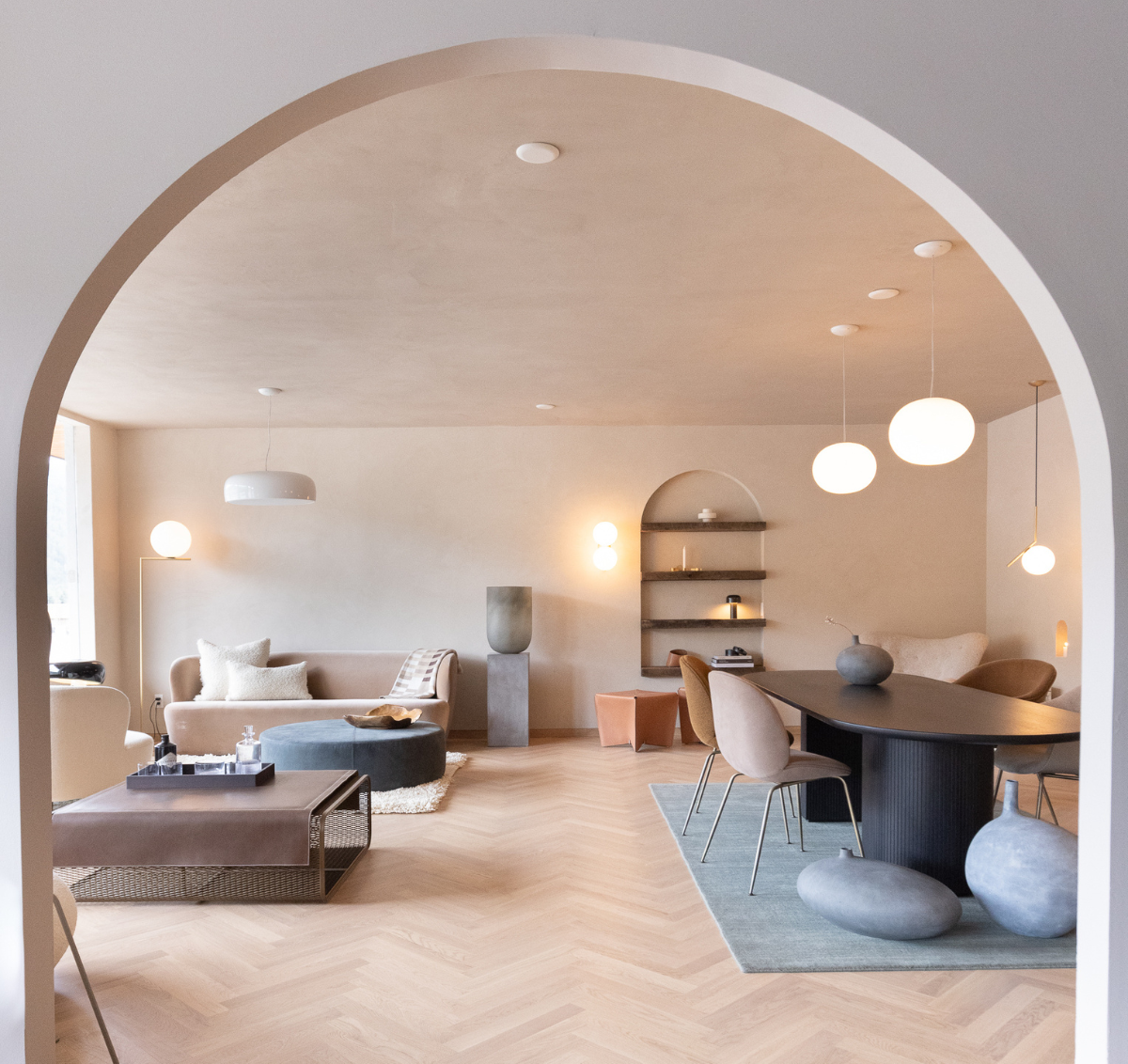
Photo: Rob Prechtl | Space: Hygge Life
Chances are you’re familiar with a herringbone pattern–it can be found all over homes, clothing, streets, walls and, obviously, floors. Named for its likeness to a herring fish’s bone structure, herringbone is simply a pattern of staggered rectangles which perfectly fit into each other to create a zigzag pattern. It’s long been popular in floors and Stuga now carries two absolutely stunning herringbone hardwood floors: Sisu and Old Town.
Herringbone: A Rich History
It’s safe to say that herringbone is a classic hardwood floor. In fact, it’s been around for centuries. The first record of using this zigzag pattern was in Ancient Rome. The Romans discovered that laying their bricks in a v-shaped pattern, as opposed to the more common stacked or offset patterns, created a very stable road. The byproduct of that practical decision has had quite a major influence over not just bricklaying, but textile design, jewelry, and of course, floors.
In the 16th Century, herringbone made its appearance in wealthy estates and castles as a parquet floor. An etymology side note: “parquet” means “small compartment” in French, so herringbone, using smaller bits of wood flooring to create its pattern, was a perfect choice for these floors. The result was a beautiful pattern everyone, not just the upper crust, wanted in their homes and therefore this stunning floor made its way into the everyhome.
It has remained a popular choice for floors in Europe since its origins, despite spending a few decades hiding under inexpensive wall to wall carpeting produced in the early 20th century. The pattern has slowly crept into homes in North America, and it seems like we are hitting a resurgence of this intricate pattern all over the world today. It’s no wonder, as herringbone is a timeless and strong choice for your floors.
Why Choose Herringbone Floors?
At Stuga, we are completely enamored with the classic look of a herringbone hardwood floor, but looks aside, herringbone floors are greater yet. They provide a very sturdy base for your home, as the pattern is extra strong–just ask the Romans. The v-shaped pattern creates movement in a room which can make a room feel bigger. And of course, they are a timeless floor that will stand by as other trends come and go.
Herringbone floors have come a long way, and Stuga’s herringbone options are making them even more accessible, thanks to Scandinavian ingenuity. Instead of the time consuming install, sand, and stain method most herringbone floors require, both Sisu and Old Town are prefinished and easy to install. This makes your install run quicker and smoother, getting you ready for that #EyeScandi sock party that much faster.
While we love the ease and classic beauty of both Sisu and Old Town, with a little bit of work, you can actually use any of our floors to create your own herringbone pattern as well! Our founder and CEO installed Shell in a herringbone pattern with fantastic results. It takes a little extra planning and attention to detail, but it is a very cool way to use our floors for a custom project. Don’t hesitate to call us if you have questions about this unique process, we’re always happy to help!
How to Install Herringbone Floors
Once you've narrowed your floor choices down to herringbone, it's time to think about installation. While most of our floors can be floated, stapled, or glued, herringbone is a little more restrictive. Since this pattern does not have the same locking system as other Stuga floors, it can only be glued.
You can use any flooring adhesive for the job (although we're partial to Bostik Greenforce or Bona R851 for their low VOC levels). Be sure to properly weigh down your floor as it dries on top of the glue. You can find our glue-down instructions right here.
Once your herringbone floors are installed, share your photos by tagging @stugastudio and #EyeScandi on Instagram!
